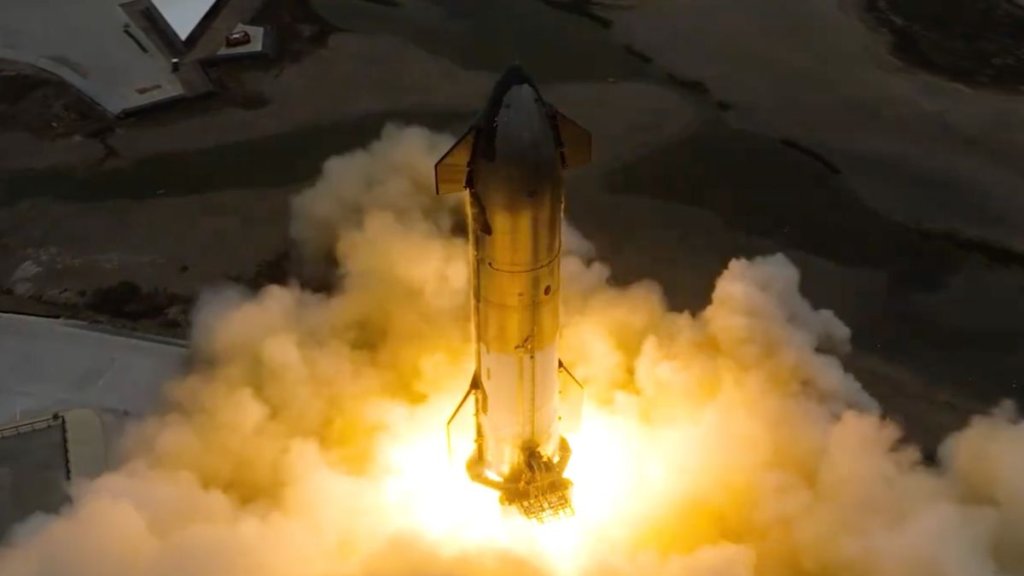
SpaceX’s next Starship vehicle has breathed fire ahead of its coming test flight.
A 165-foot-tall (50 meters) Starship upper stage just fired up all six of its Raptor engines in a full-duration “static fire” test at SpaceX‘s Starbase site in South Texas, the company announced today (March 25).
Static fires, in which engines are briefly lit while a vehicle remains anchored to the pad, are common prelaunch tests. SpaceX conducted this one to prep for the fourth Starship test flight, which could take place as soon as early May.
Related: Relive SpaceX Starship’s 3rd flight test in breathtaking photos
Full-duration static fire of all six Raptor engines on Flight 4 Starship pic.twitter.com/HzS4SeaoEV
— SpaceX (@SpaceX) March 25, 2024
SpaceX is still analyzing data from the third Starship flight, which launched from Starbase on March 14.
The 400-foot-tall (122 m) megarocket — which consists of the upper stage, known as Ship, and the huge Super Heavy first-stage booster — performed quite well on that test mission, according to SpaceX.
For example, both stages aced their ascent burns, and Super Heavy conducted a successful “boostback” burn to get in position for a splashdown in the Gulf of Mexico. The booster’s landing burn didn’t go according to plan, however, and it ended up breaking apart about 1,650 feet (500 m) above the waves.
Ship flew for about 50 minutes and notched a number of milestones, including successfully opening and closing its payload door. But the craft broke apart during its reentry to Earth’s atmosphere, so it didn’t splash down in the Indian Ocean as planned.
Starship’s first two test flights, in April 2023 and November 2023, ended after just four minutes and eight minutes, respectively.
SpaceX aims to conduct six or more Starship test flights this year, in an effort to get the fully reusable vehicle up and running and fast as possible.
But the timing of flights is not entirely up to the company; there are regulatory hurdles to clear as well, chiefly the securing of launch licenses from the U.S. Federal Aviation Administration. The FAA is currently overseeing the investigation into what happened on Starship’s third flight, and it’s unclear when that work will be done.

